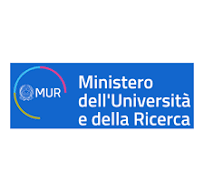- Ricerche e Progetti
- Biblioteca della Libertà
- Pubblicazioni e Working Paper
- Articoli e media
- Eventi e notizie
2017
Human-animal relations and the idea of cooperation
WP-LPF 1/17
- Categoria/Category
- WP-LPF 2017
- Autore/Author
- Federico Zuolo
- Editore/Publisher
- Centro Einaudi
- Luogo/City
- Torino
- Articolo completo/Full text
- WP-LPF_1_2017.pdf
Abstract
The idea of cooperation has been recently used in human-animal relations to justify the application of an associative theory of justice to animals. Following a post-Rawlsian understanding of justice, in virtue of animals’ cooperation with humans for the production of some valuable goods (assistance, nourishment, scientific progress), animals are owed a just treatment. In this paper, I discuss some of these proposals (by Coeckelbergh, Kitcher, Niesen, Valentini) and seek to provide a reformulation of the idea of cooperation suitable to human-animal relations. The standard idea of cooperation, indeed, presupposes mental capacities and attitudes which can be hardly found in animals. Hence, to make sense of the idea of human-animal cooperation we should try and formulate a version of cooperation that accommodates these differences while still being faithful to the core idea. To do this, I try to disentangle the idea of cooperation from other cognate notions and distinguish it from exploitation, use, and relationship of companionship. The upshot is a minimal taxonomy of human-animal relations that covers most of possibilities from the worst type of relation in terms of the neglect of animals’ welfare (exploitation) to the one which is most favourable to animals’ welfare (relationship of companionship). In this taxonomy cooperation is a form of relation where animals are used to produce a valuable good in a way that is compatible with their ethological features and without being harmed. This idea of human-animal cooperation maps onto some actual social practices but retains the normative purchase of cooperation and excludes relations that are harmful to animals.







